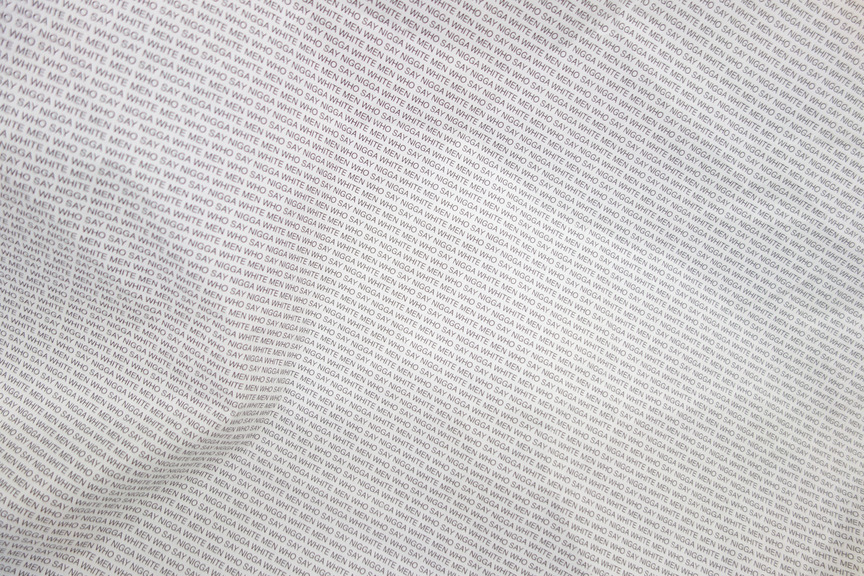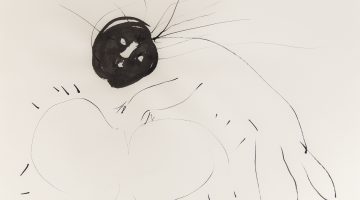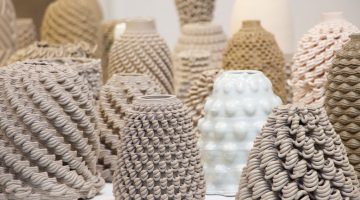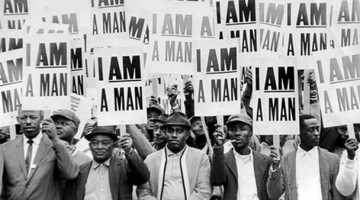Chris Duncan
MEDIA BASED TIME
April 24 – May 9, 2015
Et al.
620 Kearny Street, San Francisco, CA 94108
There is stillness in Chris Duncan’s solo exhibition at Et. al gallery in Chinatown. Marked by the time that he tracks in his work—printed, rubbed, or faded—the repetition and pairings of work point toward an inward, contemplative, and empathic place.
Anchoring the exhibition is a large stretched linen canvas of a crayon rubbing, APRIL 6TH, 1968-APRIL 6TH, 2015 (excerpted subtitle “basement floor”). The material gives the illusion that the piece is a photographic transfer, but knowing that it is not a photo carries a significant weight—not only with the formal qualities but also to the implications of its meaning. While photos are documentation through a lens, rubbings are documentation in situ, by hand. Creating the work not only requires the artist to be in a space, to see and observe and then freeze a moment, but it requires the artist to touch the space—to literally rub it. The piece was made in a house located in West Oakland, where Black Panther member Bobby Hutton was killed by police in 1968, on April 6 just two days after Martin Luther King’s assassination. The nation was in mourning and outrage was heated by long standing civil rights injustices toward people of color. After a violent ambush toward the Oakland Police where two officers were killed, he and fellow Panther Eldridge Cleaver retreated to the house. The police raided it, throwing tear gas into the basement, which igniting a fire. In surrender, Hutton stripped down to his underwear—completely vulnerable and unarmed—but was shot more than twelve times and died. The house still stands today, but the basement was not fully repaired. Instead, the burned wood was merely painted white. The blatant irony of “white washing” the deaths of black men makes the heart wrench and the mind reel with utter shame. To white wash the history of the black lives lost is a feeble attempt to erase what happened to them. A smaller rubbing, also titled APRIL 6TH, 1968-APRIL 6TH, 2015 (excerpted subtitle “charred ceiling joist”) was made using the wood beam ceiling. As Duncan was working, the white paint began to flake and crumble, revealing the burned wood that remains a constant reminder of police brutality not only in Oakland (where Duncan lives) but around the nation.
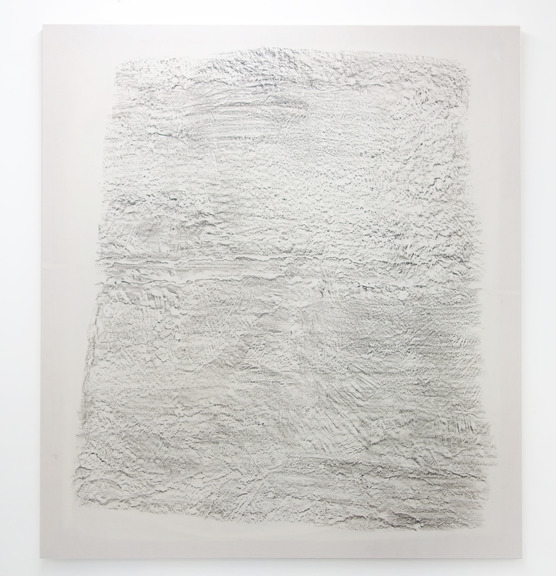
Chris Duncan. “APRIL 6TH, 1968-APRIL 6TH, 2015. 1218 28TH STREET, OAKLAND CALIFORNIA. RUBBING OF BASEMENT FLOOR WHERE BOBBY HUTTON AND ELDRIDGE CLEAVER HID OUT IN THE MOMENTS BEFORE BOBBY HUTTON WAS MURDERED BY OAKLAND POLICE.,” 2015. Crayon on muslin. 64″ x 72″
The piece grounds the viewer in remorse to remember the events that prompted Duncan to seek out the space and create the work. Duncan’s work regularly acknowledges the specificity of places he selects to document, and takes their history into account not only as impetus for his choices, but to impart relationships to the viewer. The rubbings carry the traces of action and through their making they become an archive by documenting action to remind the public of the history beneath them. They differ from photo archiving, in that while photos click and pause, rubbings go on for a longer duration. They can be seen more equated with film as a continuous thread of time, tracking each movement without pause. In a sense, the pieces can be seen as a film still, a documentary clip.
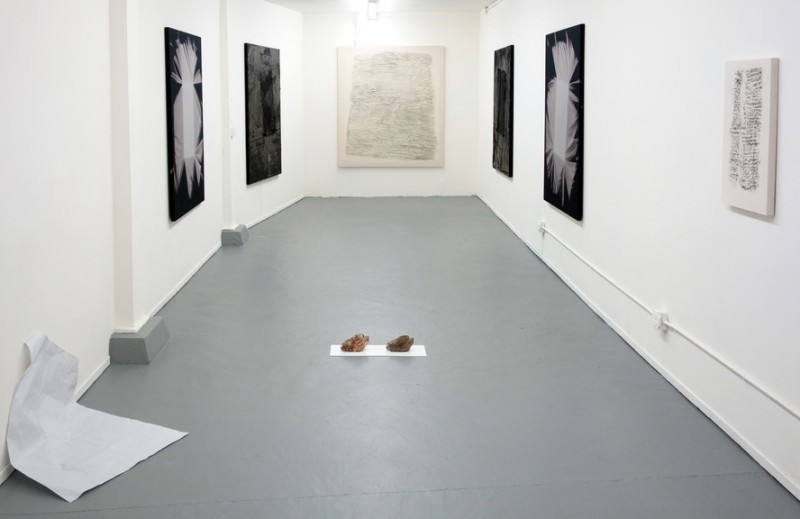
Chris Duncan. Installation view of MEDIA BASED TIME. Et al. 2015.
Placed on the floor, and leaning on the wall near the entrance of the exhibition is the piece titled A THING THAT HAPPENS (W.M.T.S.N.) (2014). Printed in black small text in full bleed on white paper are the words “WHITE MEN WHO SAY NIGGA.” The print is crumpled and appears to have been installed, and then removed in a frustrated act of editing, but allowed to remain in the place where it fell. The statement is clear: White men who say “nigga” is not OK. Co-opting language is common and it is difficult to lay claim or ownership of words. But in this case, the issues of privilege and further examples of “white washing” rise to the surface.
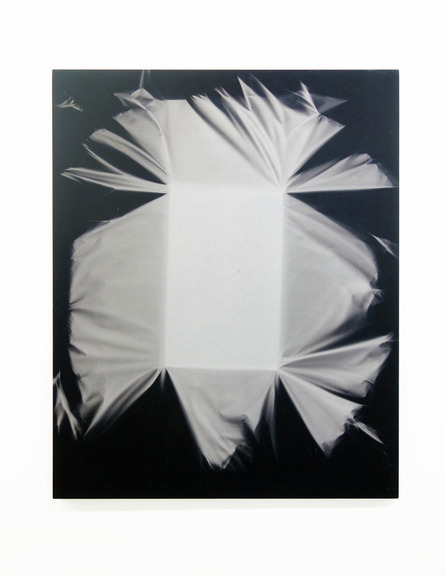
Chris Duncan. “SOUND IN TIME (LEFT SPEAKER) 6 MONTH EXPOSURE
FALL 2014-SPRING 2015,” Fabric, sun, time
60″ x 40″
Aside from the careful choices Duncan makes to include historical significance as documentation, or a record of events and places, he also take time into account. Four stretched canvases are also in the room: two all black works and two sun bleached works. The sun works SOUND IN TIME (RIGHT SPEAKER) & SOUND IN TIME (LEFT SPEAKER) 6 MONTH EXPOSURE (Fall 2014-Spring 2015) are created over the course of several months, without the assistance of Duncan’s hand in the matter. He simply allows time to take its toll on the material, slowly fading the fabric in areas where the sun is exposed to it the most. The sun works allow nature to run its course, while Duncan waits patiently for the results. The sun works create a tromp l’oeil effect on the two dimensional surface, each wrinkle that was demarcated by the sun, fades to more shadowy lines in the creases where the fabric was folded under the speaker, concealed from the ultraviolet rays. Because the subjects are speakers, it brings to mind the use value of the works in relation to their title, SOUND IN TIME. Silently, the speakers also wait patiently until they are used again for the intended purpose. The black works, PITCH BLACK (RIGHT) & PITCH BLACK (LEFT) ONE HOUR PAINTING IN COMPLETE DARKNESS, are created over the course of only one hour. As the title notes, they are made in complete darkness. The double entendre is clear in the materials as well—black out fabric. The background of the two black pieces is predominantly covered with a heavy one inch thick impasto of black oil paint, smeared on with rapid and uncertain gestures. Large criss-cross scrapes create striated patterns. A torn rectangular segment of the black-out fabric hovers on the surface, mimicking the rectangle shapes on the sun works. The sun works and the black works are in converse conversation with each other. Where one utilizes a long length of time, the others are literally “timed.” The conceptual contrast of the two emulates countless juxtapositions: night and day, lightness and darkness, sight and blindness.
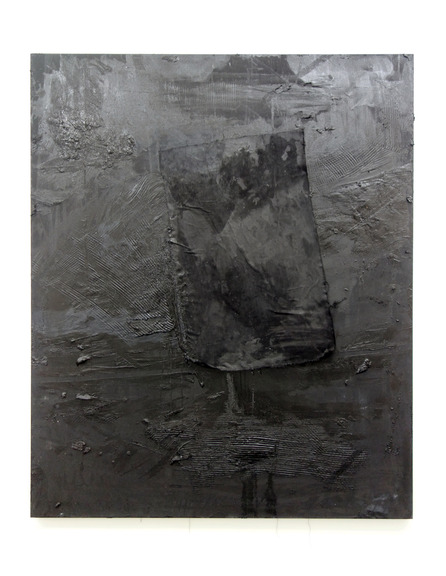
Chris Duncan. “PITCH BLACK (LEFT) ONE HOUR PAINTING IN COMPLETE DARKNESS.,” 2015
Oil on blackout fabric
70″ x 54″
In all, the whirling dichotomies that Duncan creates are poetic and complicated—their meanings run deep. Yet the results are subdued, allowing for space to contemplate and reflect on the hidden meanings that are only revealed through conversation or inquiry. Duncan’s work remarks upon identity and stillness through repetition and pairings. It is as if to say, there is power in togetherness.
